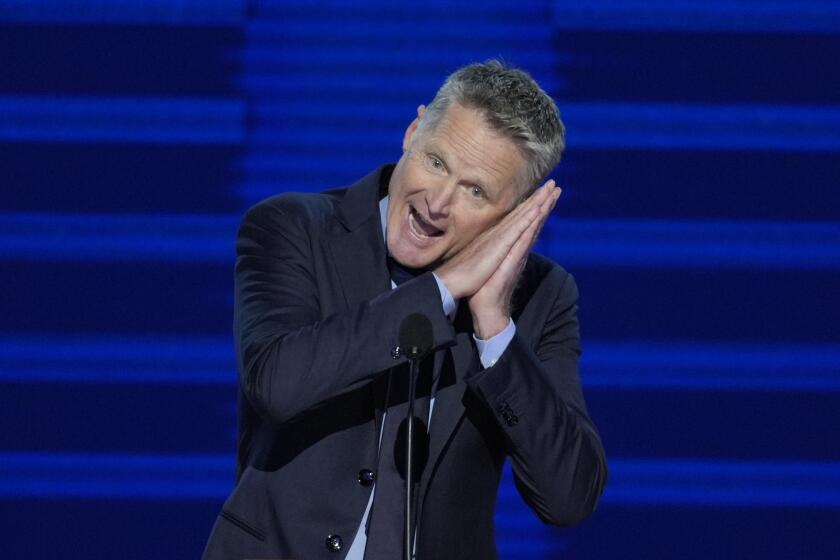How firefighters are tackling this fire season, according to a veteran hotshot
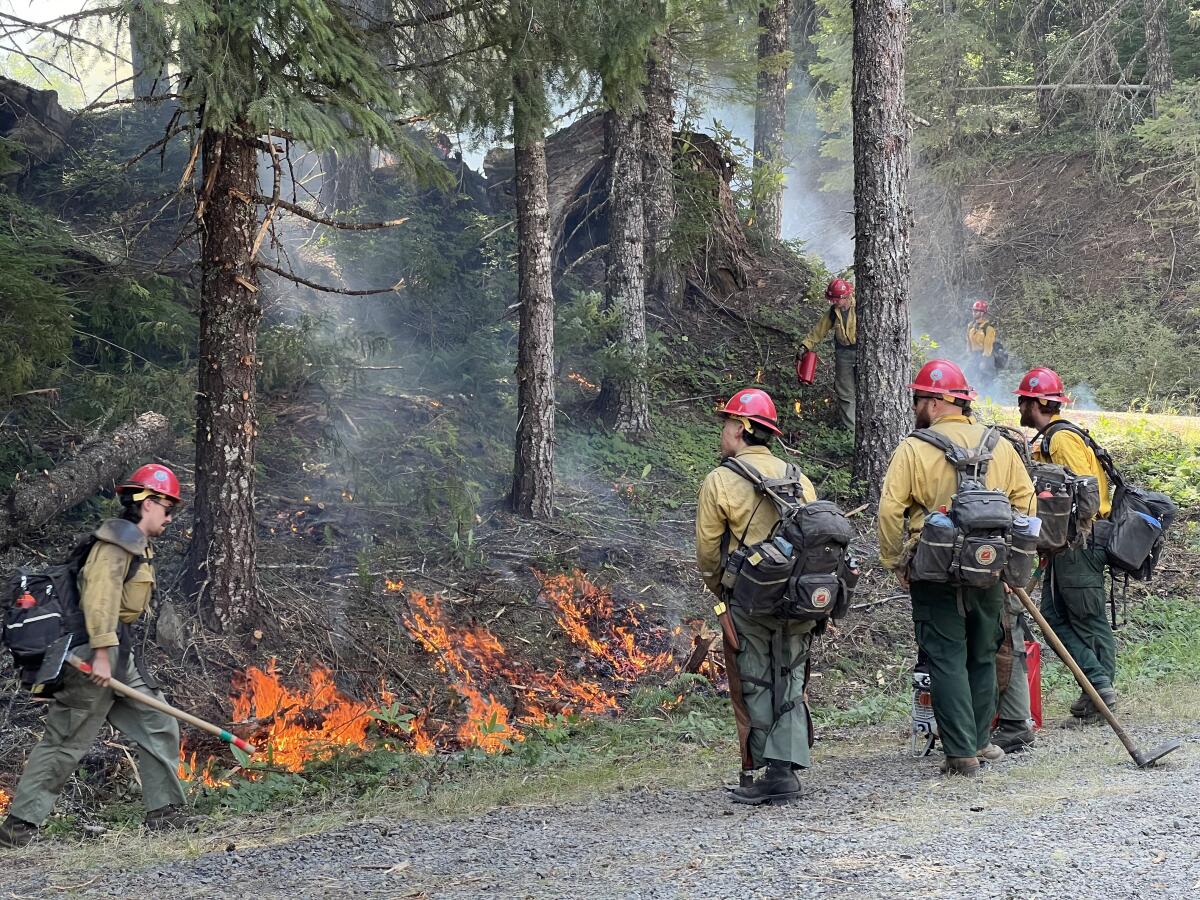
Good morning. It’s Monday, Aug. 19. Here’s what you need to know to start your day.
- A veteran firefighter tells us how fire season is shaping up.
- A town’s name recalls the massacre of Indigenous people. Will changing it bring healing?
- In L.A., 13,000 complaints of tenant harassment led to four fines. Advocates call for stronger laws.
- And here’s today’s e-newspaper.
You're reading the Essential California newsletter
Our reporters guide you through our biggest news, features and recommendations every morning
You may occasionally receive promotional content from the Los Angeles Times.
Hotshot crews are keeping busy in this early and active fire season
When a wildfire grows dangerously large, the U.S. Forest Service’s hotshot crews step in.
With hand tools, chain saws and sometimes dozers, the elite firefighters clear brush, dig out lines and set strategic burns to deprive advancing flames of fuel. When you see news headlines on what percentage of a fire is contained, hotshots are among those doing the hard work to contain it.
After a couple of mild fire seasons, hotshot teams across California and other Western states are keeping busy this summer.
To learn more about what they’re up against, I spoke with Dan Mallia, superintendent of the Redding Hotshots. When we spoke, he and his crew were on Day 10 of a 14-day assignment in Oregon, where they’d been dispatched to aid with the Willamette Complex fires, which have scorched thousands of acres.
“Large-fire support is what we do really well,” Mallia told me. “That’s kind of our bread and butter.”
The Redding Hotshots have worked some of the biggest and deadliest blazes in state history, including the August Complex, Dixie and North Complex fires, plus the recent and still-active Park fire. He and his team have had a firsthand look at the devastation caused by those blazes.
“You do a lot of self-reflection, like, ‘What else could we have done? Did we do enough?’ I always feel like we have,” Mallia said. “We fight fire aggressively, but … the safety and well-being of my crew is No. 1.”
Letting the fire ‘do its thing’
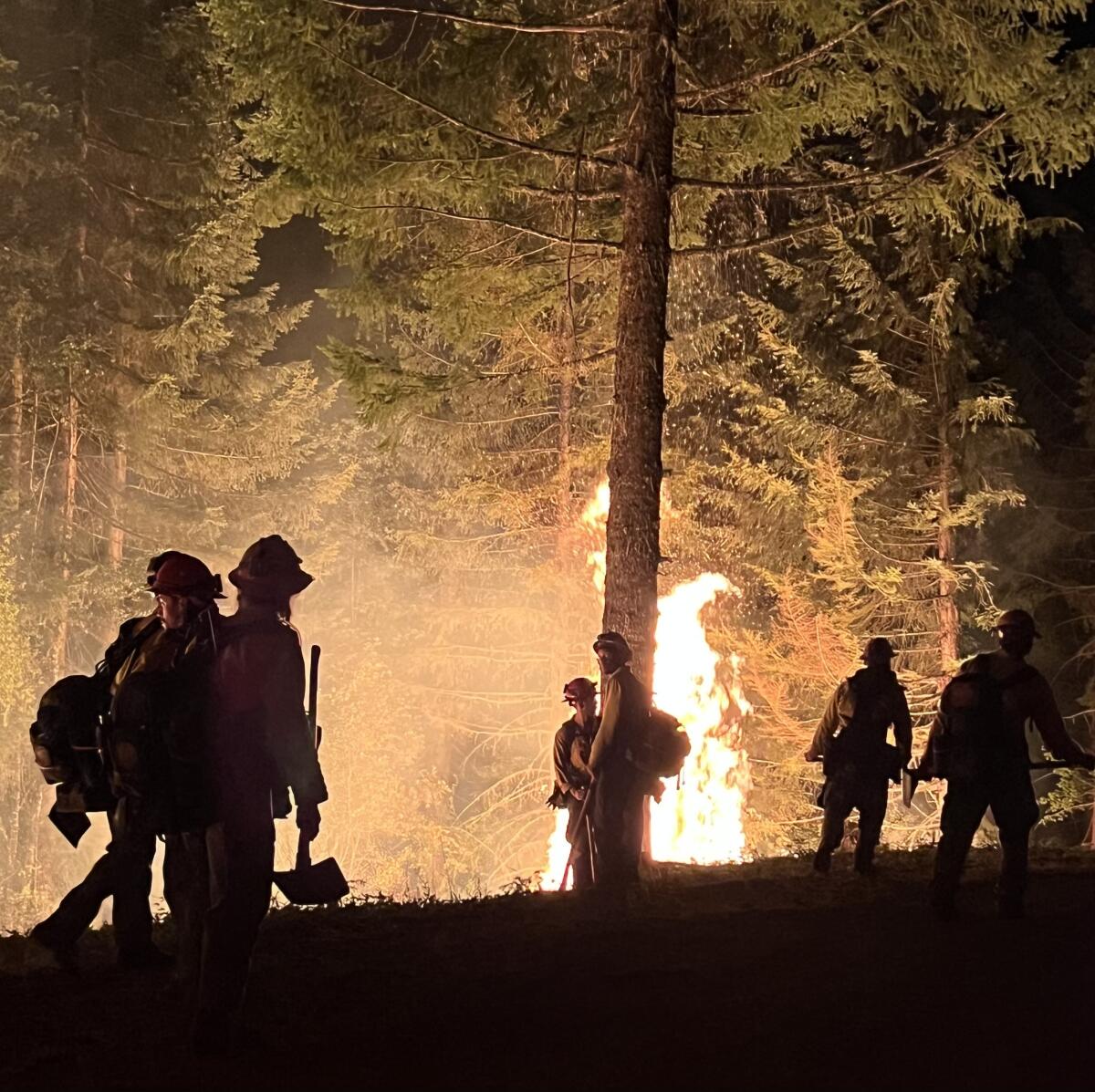
Mallia said this season got off to an early start, especially compared with the previous two seasons. Those were tempered by back-to-back wet winters as well as last year’s Hurricane Hilary, which brought notable rain, dousing the mountains and tamping down fire risk at a pivotal moment in the season.
The typical hotshot assignment is 14 days straight, working a fire “like a Swiss Army knife,” Mallia said. Then crews get three days off before it’s back to the forest.
The latest assignment was the fourth “physically and mentally hard job” in a row for Mallia’s crew.
To meet the moment, it’s essential for the crew to eat well and get as much sleep as possible, he said. And maintaining a healthy perspective is also helpful.
“There’s a lot of times where, no matter what we do, the fire is … going to do what it wants to do,” Mallia said. “And no amount of air tankers and hotshot crews and engines and bulldozers are going to stop it. Those are the times where we need to get out of the way of it, let it do its thing.”
The need for good fire
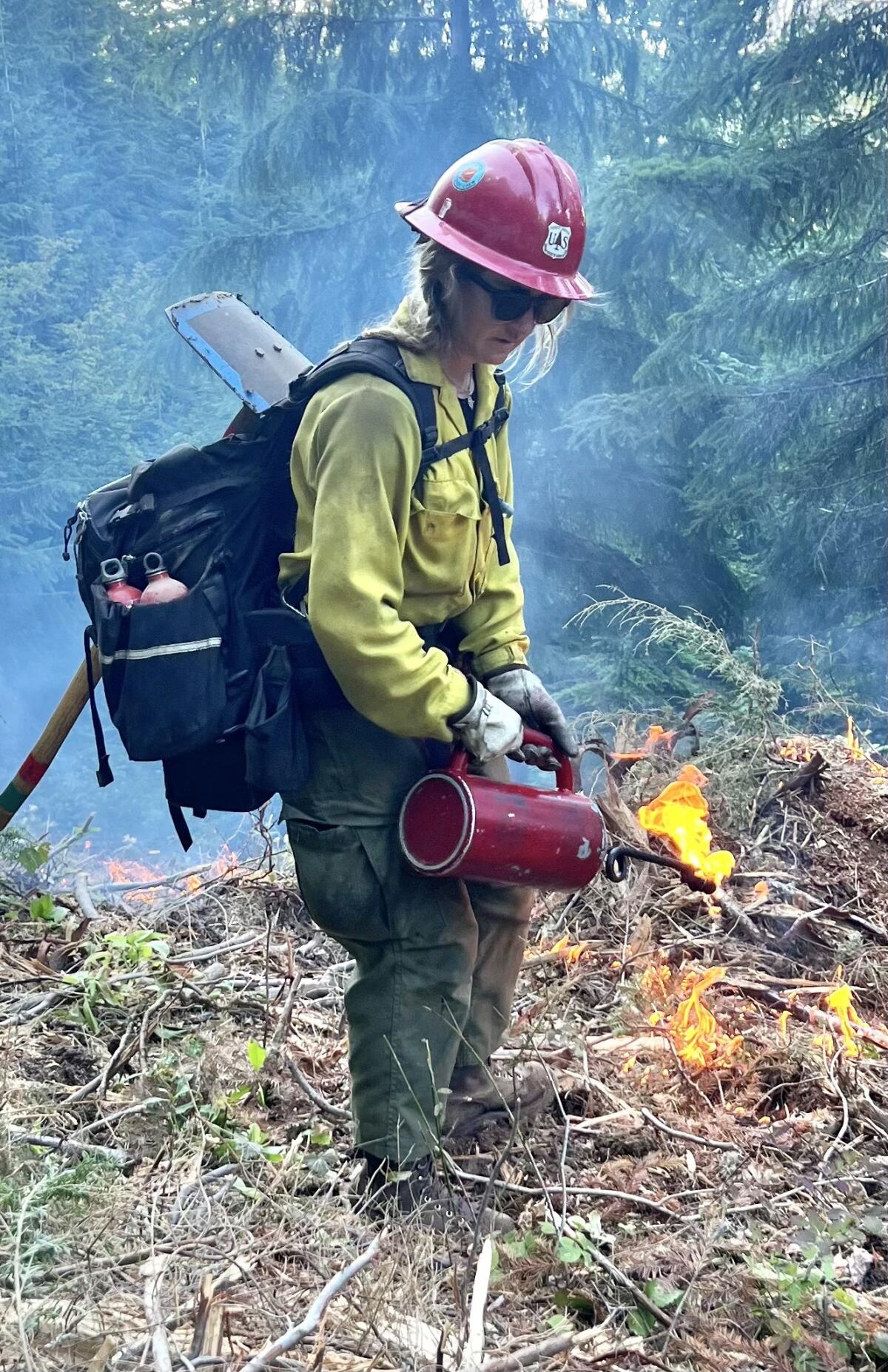
The increasing severity of wildfires in the West is something wildland firefighters have faced in the last several decades as some blazes have surpassed 1 million acres.
“Talking to some of our senior leaders … those numbers are unfathomable,” Mallia said. “A big fire to them was like 10,000 acres back in the ’60s and ’70s.”
Global warming is undoubtedly playing a role, he told me. On top of that, fire and forest officials are reckoning with roughly a century of firefighting policies that have upped the risk that fires will be more destructive. Burning was long hindered, allowing unchecked plant growth.
“We’ve been so good at putting fires out when they’re small that we’ve changed the makeup of what a healthy forest looks like,” Mallia said. “That’s definitely making things harder when conditions are right for fire to grow ... and that excess fuel in the fire area [makes it] tougher on us to suppress the fire.”
In response, state and federal agencies have been embracing longtime Indigenous practices of fire management that recognize fire as a natural force that helps balance forest ecosystems.
“I’m a huge proponent of prescribed fire,” Mallia said. “I’ve got to see the effects of a severe wildfire moving into an area that’s been treated and watching that fire behavior slow down to almost stop and give us an opportunity to [contain] that fire.”
“I think one of the big notions is that fire is bad, [and] when it takes out communities,” he said, that’s “absolutely” true. “But there’s a lot of times where fire is really good.”
Today’s top stories
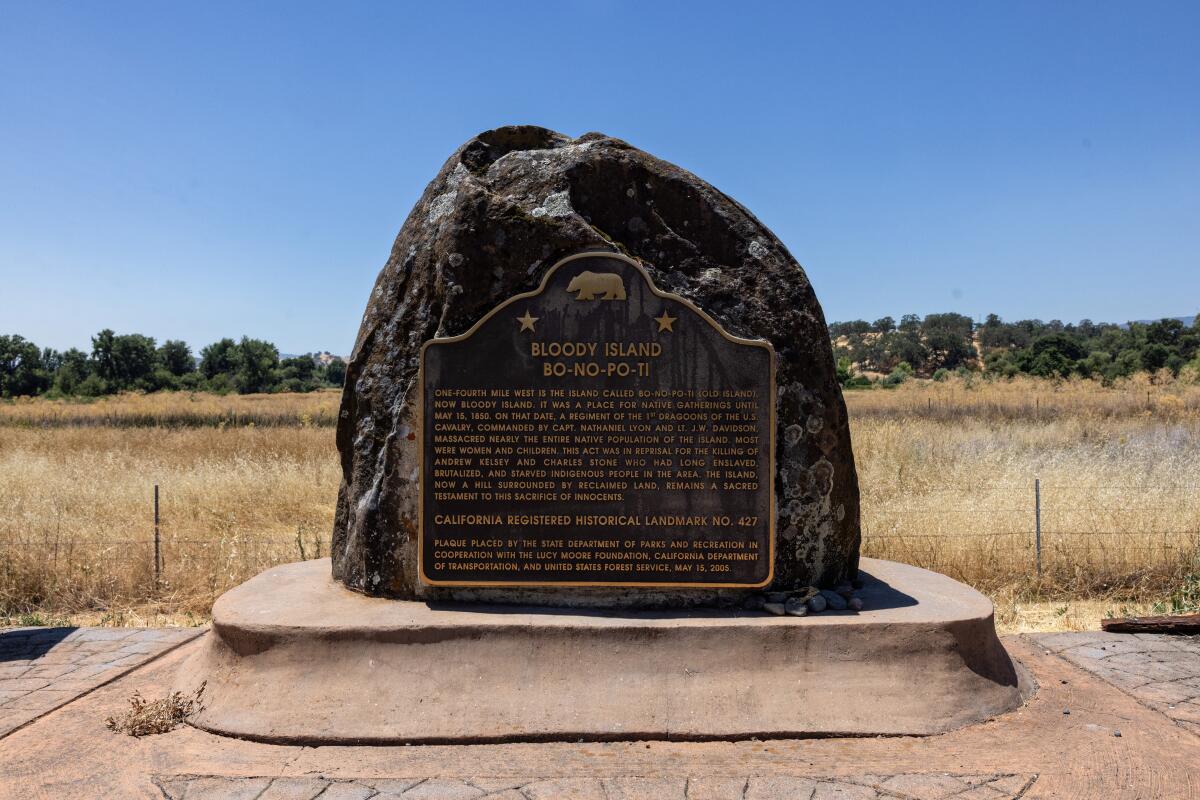
California culture
- A town’s name recalls the massacre of Indigenous people. Will changing it bring healing?
- L.A. could restrict tour buses near Marilyn Monroe’s Brentwood home.
- It’s peak melon season. Here’s how to eat this late-summer treat.
2024 election
- Kamala Harris’s abbreviated campaign has helped her pull into the lead (for now).
- In political ads, Democrats have gone on offense about border security
- Republicans asked the Supreme Court to block 40,000 Arizonans from voting in November.
Law enforcement and policing
- A new poll shows criminal law attorney Nathan Hochman has the momentum needed to unseat L.A. County Dist. Atty. George Gascón.
- LAPD voiced concerns about the L.A. City Attorney’s push to charge a protester, memo says.
- An L.A. sheriff’s deputy was sentenced to probation for assaulting a woman with a mental disability.
Government and policing
- Attorneys say nobody tracks how many foster kids are homeless in Los Angeles County.
- In L.A., 13,000 complaints of tenant harassment led to four fines. Advocates call for stronger laws.
- The mayor of landslide-plagued Rancho Palos Verdes is appealing to Elon Musk for help as a possible power shutoff looms.
More big stories
- ‘A much more infectious’ COVID variant is fueling California’s relentless surge.
- A 12-foot-long harbinger of doom washed ashore in San Diego.
Get unlimited access to the Los Angeles Times. Subscribe here.
Commentary and opinions
- Robin Abcarian: The role of the post-menopausal woman in society? JD Vance has some thoughts.
- Jackie Calmes: Democrats are embracing that hopey-changey thing again in Chicago. Will it work?
- Times editorial board: A shiny new jail in L.A. is a bad idea, no matter what it’s called.
- LZ Granderson: Coach Tim Walz took a stand when queer kids desperately needed an advocate.
- Times editorial board: Stop taxing tips? It’s a popular idea. And a bad one.
- George Skelton: Don’t let Big Tech monopolies kill local news. Democracy is at risk.
- Mark Z. Barabak and Anita Chabria: The big question as Democratic convention opens: Can Harris keep her momentum alive?
Today’s great reads
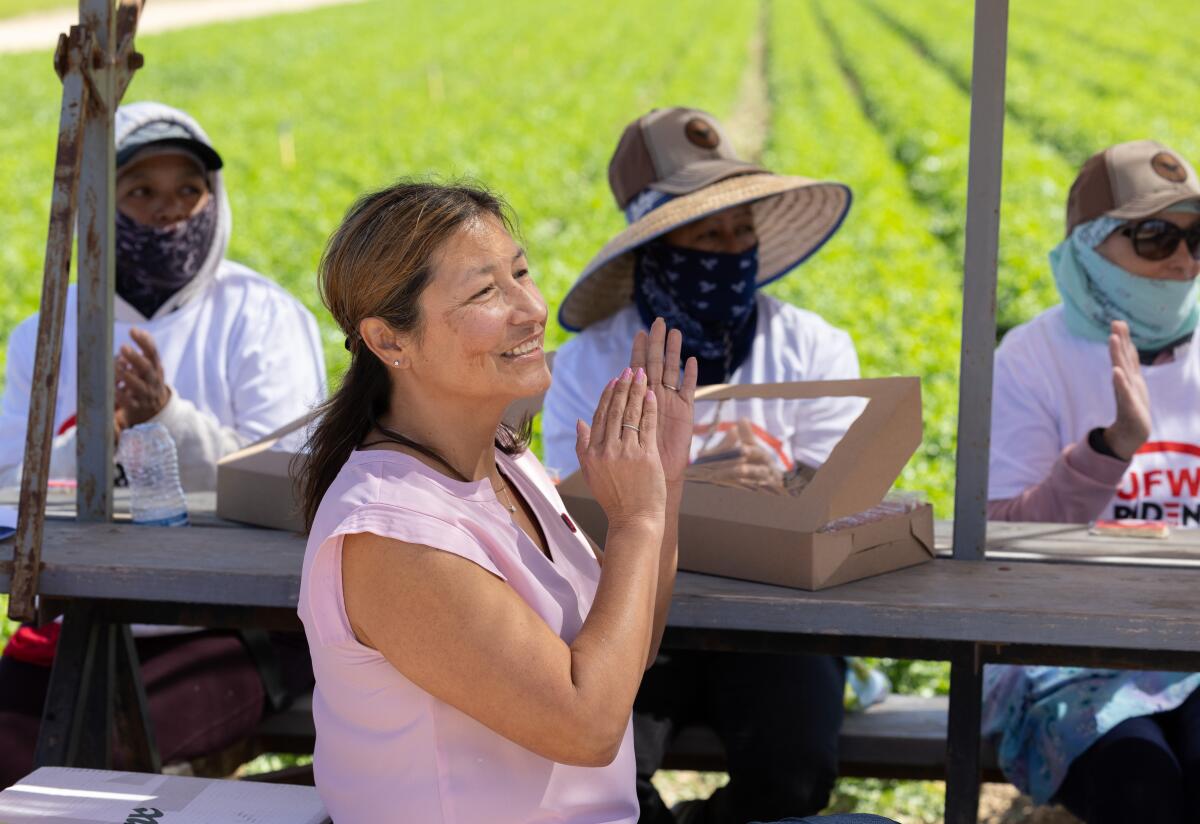
Her grandfather, Cesar Chavez, taught her about activism. Now Julie Chavez Rodriguez is running Kamala Harris’ campaign. “The origin story of the Latino voter literally begins in her bloodline,” one expert told The Times. Can Rodriguez win over Latinos for Harris?
More great reads
- Solving Steve Martin doesn’t take that much guesswork.
- After 25 years, I wanted to quit drinking and couldn’t. Here’s how I finally got sober.
How can we make this newsletter more useful? Send comments to essentialcalifornia@latimes.com.
For your downtime
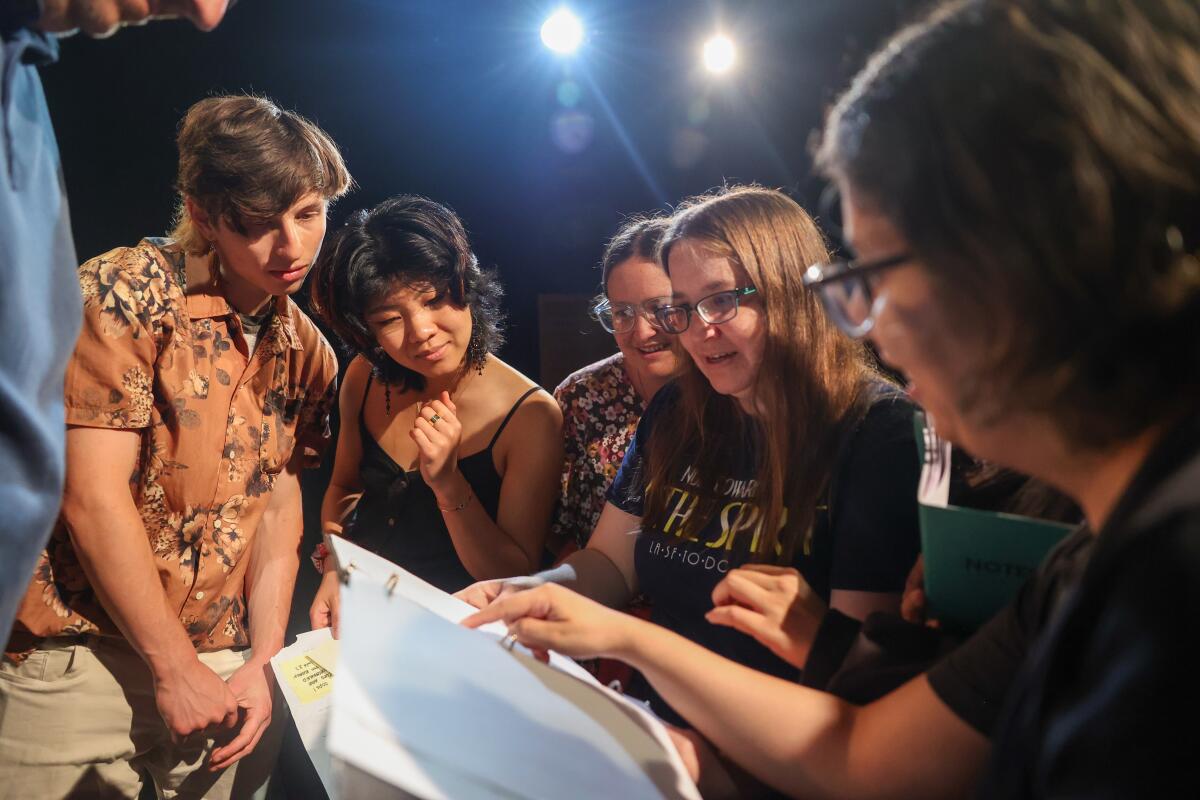
Going out
- 🍽️ Here are 19 great family-friendly picks from The Times’ 101 Best Restaurants guide.
- 🔐 When you get to this L.A. play, you find out you have 60 minutes to escape.
Staying in
- 📺 Watch “Chimp Crazy,” a disturbing docuseries that argues against the ownership of primates.
- 🧑🍳 Here’s a recipe for crispy jasmine rice with scallion-sesame “cereal.”
- ✏️ Get our free daily crossword puzzle, sudoku, word search and arcade games.
And finally ... a great photo
Show us your favorite place in California! We’re running low on submissions. Send us photos that scream California and we may feature them in an edition of Essential California.

Today’s great photo is from Enrique Lima of Calimesa: Victoria Beach’s Pirate Tower in Laguna Beach.
Enrique writes:
“Over the years our family members have enjoyed visiting this landmark. I haven’t seen anything similar at any other California beach.”
Have a great day, from the Essential California team
Ryan Fonseca, reporter
Amy Hubbard, deputy editor, Fast Break
Check our top stories, topics and the latest articles on latimes.com.
Sign up for Essential California
The most important California stories and recommendations in your inbox every morning.
You may occasionally receive promotional content from the Los Angeles Times.



